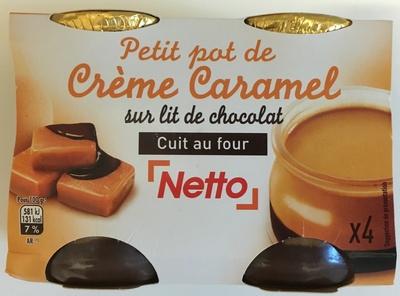Petit pot de Crème Caramel sur lit de chocolat - Netto - 4 * 100 g (400 g)
Important note: this product is no longer sold. The data is kept for reference only. This product does not appear in regular searches and is not taken into account for statistics.
This product page is not complete. You can help to complete it by editing it and adding more data from the photos we have, or by taking more photos using the app for Android or iPhone/iPad. Thank you!
×
Some of the data for this product has been provided directly by the manufacturer INTERMARCHÉ.
Barcode: 3250391966714 (EAN / EAN-13)
Common name: Dessert lacté à la crème au caramel sur sauce au chocolat
Quantity: 4 * 100 g (400 g)
Packaging: Glass, Pot, Cardboard
Brands: Netto
Categories: Dairies, Desserts, Dairy desserts
Manufacturing or processing places: France
Traceability code: FR 47.185.001 CE - Montayral (Lot-et-Garonne, France), EMB 47185 - Montayral (Lot-et-Garonne, France)
Stores: Netto
Countries where sold: France
Matching with your preferences
Environment
Packaging
Transportation
Report a problem
Data sources
Product added on by tacite
Last edit of product page on by org-intermarche.
Product page also edited by packbot, segundo.











